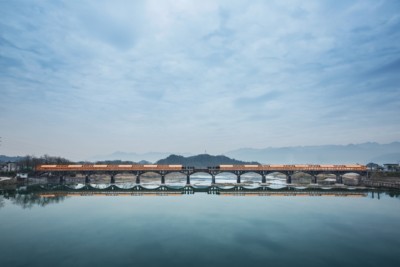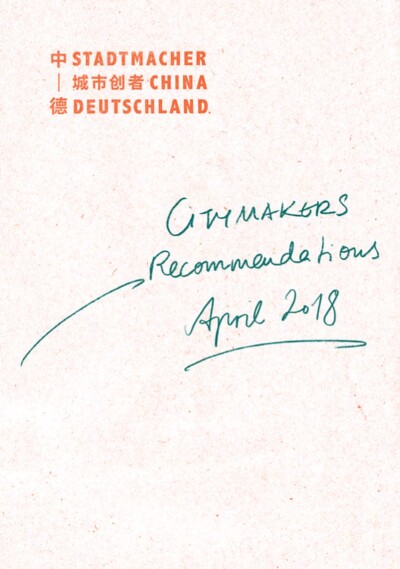XU Tiantian, you are the founder of the architecture studio DnA_Design and Architecture in Beijing. Which project in your portfolio is the most important to you?
The Songyang project. For over four years, we have been working intensively to put an architectural “acupuncture strategy” in place to revitalize the rural Songyang area as part of an ongoing process with the local community and local government. Using vernacular material and construction techniques, public buildings are integrated into the historical context. They serve the local community by restoring its rural identity and stimulating economic development there.
In Europe, the term “genius loci” is often a starting point of architectural design in both the urban context and in landscapes: the historical and present contexts are crucial. Do you agree?
After working a few years in an area like Songyang, I have to rethink the definition of context. In rural China, when the whole village with hundreds of years of history and a population of hundreds could be only one or a few big families, context is not only the spatial structure or landscape, but also layers of history, generations, pride and honor. Architecture can and is obliged to connect with the past in order to serve the present and lead to a better future.
In the current age of post-industrialization, the suburb in China is has been witnessing examples of alternative sustainable development with small-scale architecture, innovative building technology and a revival of traditional, virtually forgotten, craftsmanship. Can you share the insights you’ve gained from your project?
“Rural” has been a forgotten land for decades, in China and worldwide. There have been different methods of action in some regions, for example, the tourism development in “Swiss Rural,” and public art programs in “Japanese rural” projects. Our architectural acupuncture strategy in Songyang is not only about rural construction; more importantly, it is a new program that meets the needs of the local community by integrating local crafts and heritage. This is unusual for architects because we are used to working with a given assignment and defined projects. However, the process engages the participation of local villagers and also benefits the understanding of design on all sides.
If we did a collaborative format between China and Germany in the field of art village and/or rural development, what experience and knowledge could you bring from China and what would you like to hear or see in Germany?
The rural situation is different in both countries. An international collaboration on rural development with cultural exchange would be a good strategy and an exciting kick-off for a local rural community.
Which structures and institutional/organizational setups for cooperation with China are important for both top-down and bottom-up city-to-city cooperation?
Perhaps a research institute?
About XU Tiantian
XU Tiantian is the founding principal of DnA _Design and Architecture. Born in 1975 in Fujian, XU Tiantian received her M.A. in Urban Design from the Harvard Graduate School of Design and her Baccalaureate in Architecture from Tsinghua University in Beijing. The award-winning architect has engaged extensively with rural revitalization processes in Songyang. In March 2018, an exhibition about this work,“ Rural Moves – The Songyang Story,” opened at AEDES Architecture Forum in Berlin.
Contact
dna_beijing@126.com
designandarchitecture.net




